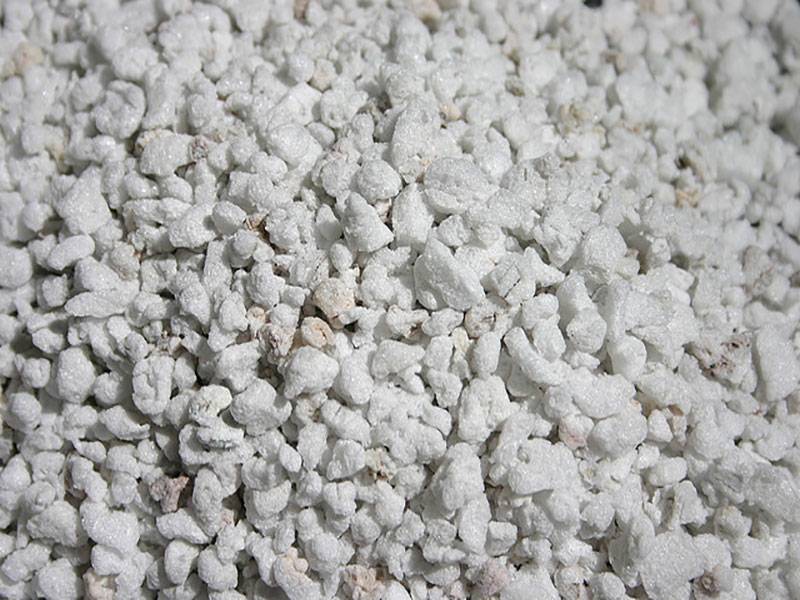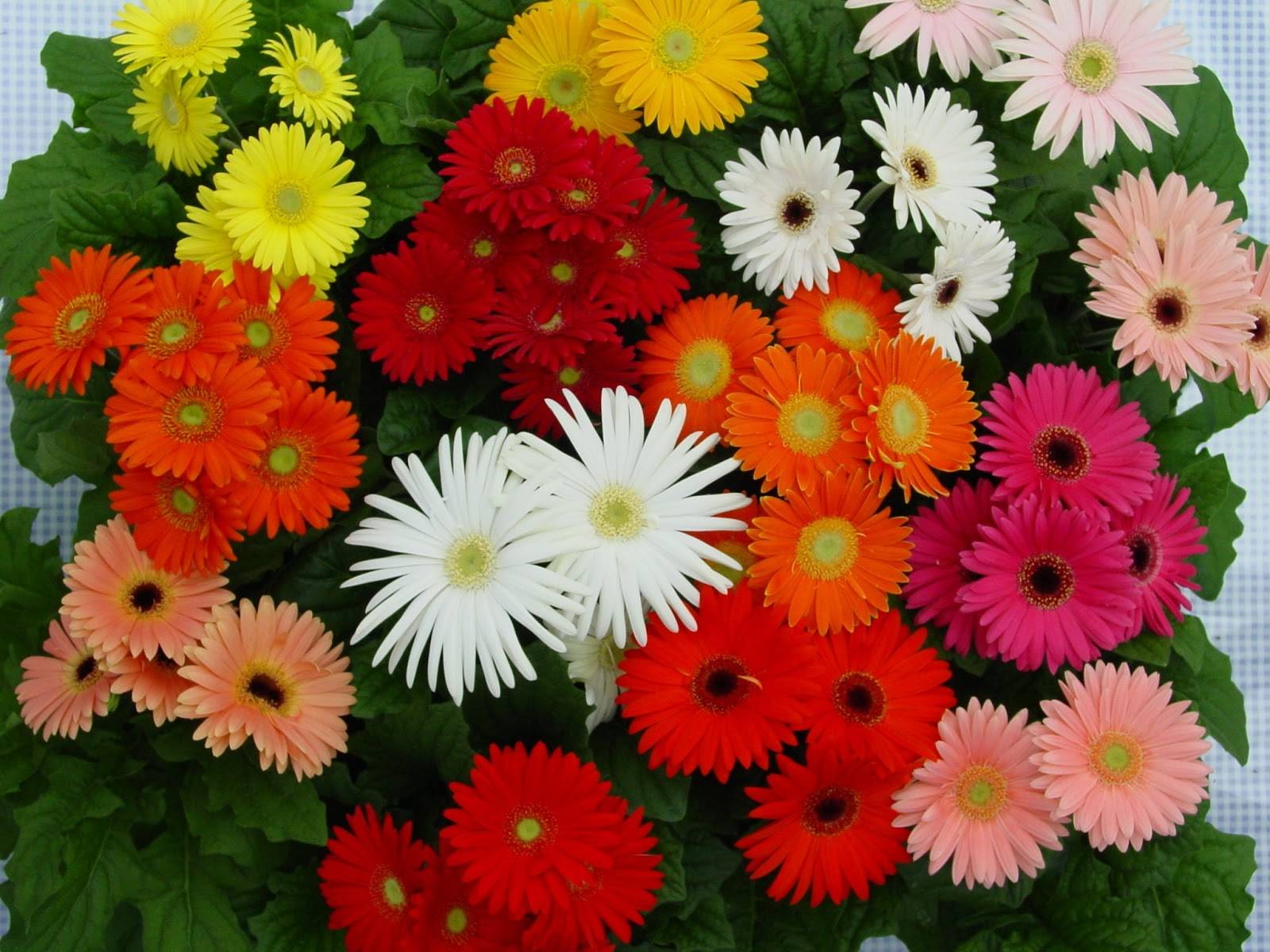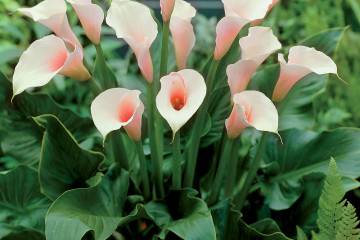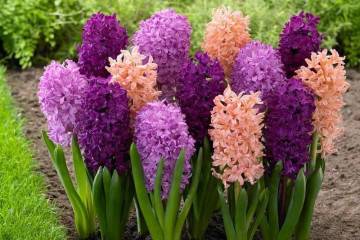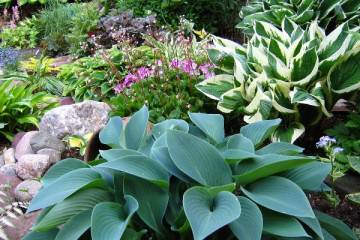Gerberas - what are these flowers, planting and care in the garden
Content:
Gerbera is a popular flower among gardeners. But not everyone decides to purchase a capricious plant that prefers warmth and sun. It is possible to grow it in the country even in frosty winter conditions, the main thing is to study all the nuances of the content of the African representative of the flora.
What kind of gerbera flower
Gerbera is a flowering plant native to Africa. It is also called daisy and transvaal chamomile. Gerbera is grown both indoors and outdoors. Beautiful bouquets are collected from it.
Specific traits:
- Peduncles are unremarkable. There are no leaves on them, and the length is up to 60 centimeters.
- Bright gerbera flowers look like a field chamomile, but their petals are denser and have many shades. The diameter of the flowers varies depending on the variety. There are very small ones, not exceeding 4 centimeters, others grow up to 15.
- Juicy green leaves are rather long, gather at the roots in a rosette.
Types and varieties of garden gerbera
There are about 80 types of garden gerbera. The following are especially popular:
- Green-leaved, also known as common. The flower petals are narrow and usually have a pale pink tint.
- Gerber Wright. The color of the flowers is light pink, they appear in the spring and persist until the onset of cold weather.
- Gerber Jameson. Differs in a whimsical character, especially when planting in open ground. The flowers are large, and the stems, on the contrary, are shortened.
- Gerbera hybrid Klondike. It produces up to 50 flowers per season. They are large in diameter, about 12 centimeters, semi-double.
- Mini. The plant has small orange or yellow flowers. They do not exceed 30 centimeters in height.
Usually varieties appear when crossing the common and Jameson gerbera. They differ not only in the color of the petals, but also in their appearance. For example, in the varieties Peter and Romeo, they are wide, so the flowers themselves are large. Alcor, Aldebaran, on the contrary, is rather miniature.
Usually, the description of a gerbera includes precisely the characteristics of flowers, because they are the main value of the plant.
Planting and growing in the garden
Gerberas are flowers that cannot be called unpretentious. They are accustomed to the climatic conditions of Africa, so they will not survive in urban flower beds. You need to try a little to create comfortable conditions for a capricious beauty at a summer cottage.
Sowing seedlings
The seeds need to be prepared in January-March. You need to calculate based on the fact that flowers will appear in 10-11 months. Planting material is best purchased in special stores. It is quite difficult to get it on your own, because gerbera requires artificial pollination.
The seeds are placed in a seedling box, it is enough to deepen them by 2-3 millimeters. Then it is covered with a moist substrate and covered with a small layer of soil on top.It is necessary to create greenhouse conditions by covering the container with glass. Plants need to be ventilated and moisturized.
After a week, shoots will appear, and after two - leaves. When there are at least three of them, you can sit down.
How to prepare the soil
Gerberas are flowers that prefer light and loose soil. To grow them, you need to carefully prepare the soil:
- turf and leaf land - 2 parts each;
- humus - 1 part;
- sand - 1 part.
Landing in open ground
It is necessary to plant gerberas in open ground when the frost ends at night. The main thing is to provide them with sunlight, without which the plant cannot live. It is necessary to water the flower correctly, otherwise it will die at the initial stage of growth.
The subtleties of caring for a gerbera
How gerberas grow outdoors depends on weather conditions. They delight with long flowering in the southern regions. The warm climate allows them to bloom as early as seven months after planting. In such cases, the gerbera is a perennial.
In the conditions of the central zone of Russia, you need to make a little more effort so that voluminous daisies decorate the summer cottage. And you need to dig them up for the winter, sending them to rest at home.
Watering rules and humidity
It is necessary to water the gerbera at the root, but be sure to control so that the top layer of the soil does not wash out. It is imperative to use warm and settled water. The plant needs maximum moisture during growth. But usually you don't need to do the procedure more than twice a week.
It is imperative to be guided by weather conditions, that is, the air temperature and the amount of precipitation. Gerbera does not tolerate both excess moisture and drying out of the soil. Therefore, you need to maintain a balance so that the plant is comfortable.
Top dressing and soil quality
You need to feed the gerbera with special fertilizers for flowering plants every two weeks. Which drug to choose depends on the stage of development of the bright beauty:
- During the growing period, when leaves appear and the flower grows in height, you need to provide the soil with nitrogen.
- During flowering, when they began to tie the buds, give preference to products containing potassium and calcium.
You shouldn't use manure or other natural remedies. This can harm the plant, provoking fungal diseases. Gerbera grows well in soil rich in minerals and slightly acidified. To do this, when preparing the soil, you can add aluminum sulfate to it.
Pruning and replanting
Periodically, old inflorescences need to be removed to stimulate the growth of new ones. But they are not cut off, but broken out or twisted out of the sheet.
The transplant should be carried out in the spring, when the frost ends and the soil becomes warm. Usually it is carried out by dividing the bush. This method is used for plants from the age of three years. The bush is dug up and divided into several parts. Young leaves should remain on each new plant. After that, they need to be planted in prepared soil suitable for gerbera. Water abundantly until the first flowers appear.
Features of wintering a flower
Plant wintering depends on the climate. It is the minimum temperature in the cold season that is decisive.
In warm winter, when the thermometer does not drop below 8-10 degrees, the gerbera is not dug up. It is considered a perennial plant. She is covered, wrapped up, and the flower hibernates. You can use dry leaves or straw. The protective material must be removed when the frost passes, the snow melts.There is no need to water and fertilize at this time.
In cold winter, the flower turns into an annual. It needs to be dug up and sent to home content. This is usually done in the fall, gradually reducing the frequency of watering and feeding. The main thing is that the temperature in the room should not be lower than 8 degrees.
The gerbera, along with the earthen lump, is moved into a suitable pot. It is necessary to water it, but very rarely. It is necessary to ensure that the temperature does not rise above 15 degrees. There is no need to feed the plant. It should rest and gain strength before the growth period. Therefore, the temperature should be stable and there should be no sunlight.
Color diversity of culture
The wide range of colors makes the plant attractive. Almost all shades are found in nature, with the exception of blue gerberas. So, flowers are:
- scarlet;
- purple;
- pink;
- lemon;
- yellow;
- coral;
- white;
- lilac;
- orange;
- cream.
Plant varieties have been bred, the petals of which have many shades. Multi-colored gerberas are especially prized for flower arrangements.
Diseases and pests of gerbera
Most often, the flower is struck:
- Root rot. The plant withers due to the disease of the leaf rosette. It rots with excessive moisture and fluid stagnation. For treatment, Fundazol is used. If the drug does not help, this can only mean one thing - you need to dig up the flower and throw it away so that other plants do not suffer from the infection;
- Gray rot. A gray, almost fluffy bloom appears on the leaves and petals. If delayed with treatment, the fungus will kill the gerbera. In addition to high humidity, the disease provokes an excess of nitrogen in the soil;
- Powdery mildew. White spots appear in extreme heat. They cover the leaves, and if not removed, they will turn dirty gray and can ruin the flower. The cause of the disease is the introduction of excess fertilizers, a lack of calcium in the soil, as well as the wrong temperature regime. Fight powdery mildew with fungicides;
- Mosaic. Yellow-green spots are visible on the leaves. The shape of the sheet plate changes over time, deforms. It is impossible to cure the plant. But in order to avoid the development of the disease, you need to fight insects, especially sucking ones, spreading the virus and not plant gerberas where pumpkins grew;
- Aphid. Insects settle on the back of the leaves, cover the buds. They suck out nutrients from the plant, thereby causing its painful condition. You can fight them with chemicals. Sometimes ash is sprinkled on the plant to drive away harmful insects.
Everyone knows what gerberas are, because they are often complemented by beautiful bouquets. Huge colorful flowers, similar to chamomile, will make any composition attractive and unique. But many are not sure that planting and caring for a gerbera outdoors is not burdensome. The main thing is to know what a plant needs for comfort and to protect it from dangerous diseases and pests.


